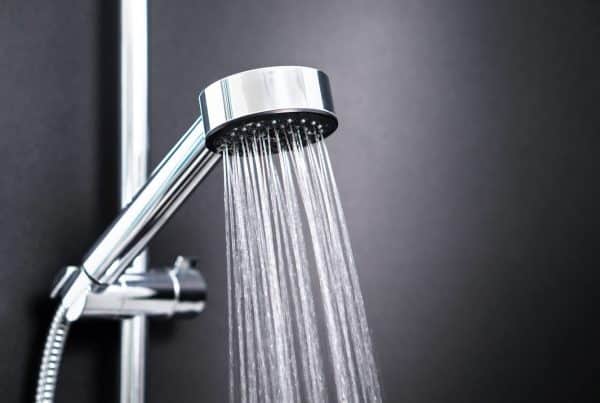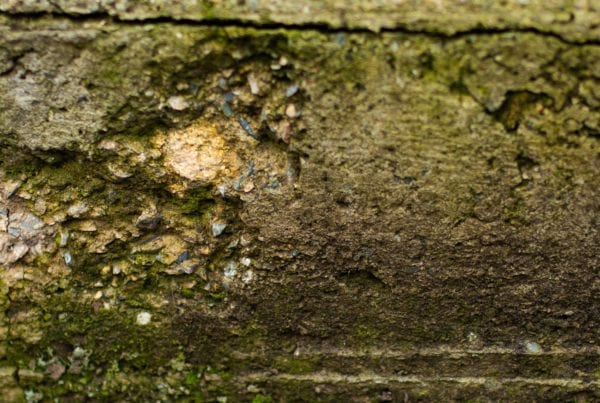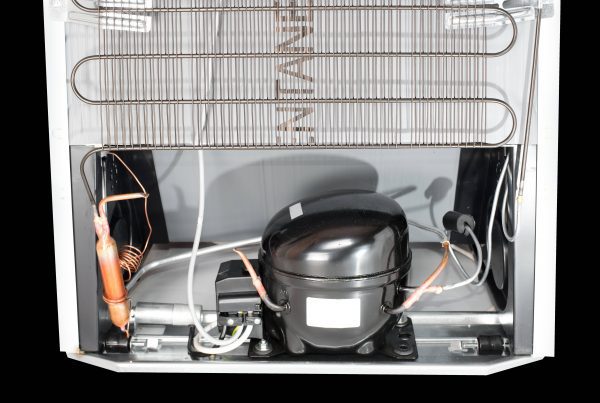
The commercial property you’re considering investing in might look solid at first glance, but what’s happening behind the walls, under the floors, or on the roof can tell a different story. A wide range of issues can turn a promising path into a costly mistake.
Before buying, leasing, or investing, a thorough inspection clears up the true condition of a building. Inspectors assess major systems, check for safety risks, and flag potential repairs so anyone with a financial interest in the property can make more informed decisions.
But what actually happens during a commercial property inspection, and what do inspectors look for? We have the answers lined up for you.
Defining Commercial Property
A commercial property is any building or land used to run a business, rent out to tenants, or generate income.
These include office buildings, retail stores, warehouses, restaurants, medical centers, and apartment buildings with five or more units. Unlike homes, commercial buildings handle more foot traffic, heavier use, and stricter safety rules.
They often have larger HVAC systems, complex electrical setups, industrial plumbing, and structural features built to support business operations.
Because of this, inspections are essential—they help buyers, owners, and investors spot potential problems, avoid expensive repairs, and make sure the property is safe and up to code before making a decision.
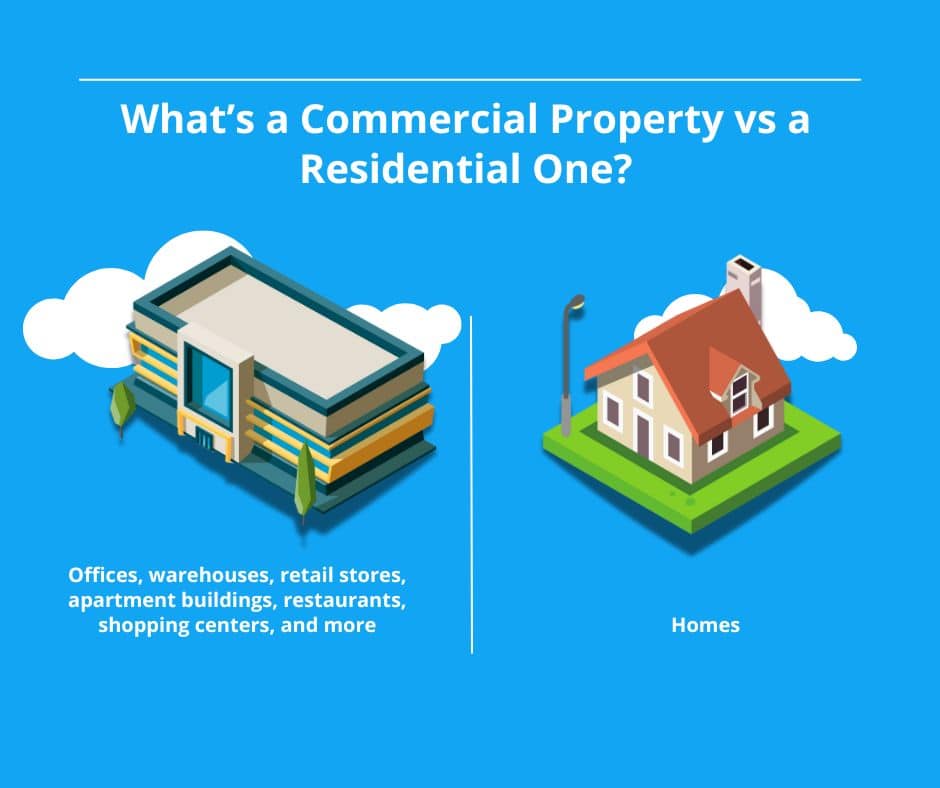
What Does the Inspection Include?
A commercial property inspection goes into the details of a building’s structure, systems, and overall condition.
The goal is to identify safety hazards, maintenance concerns, and potential costly repairs before a sale or lease agreement is finalized.
Key Areas of Focus
- Structural integrity – Foundation, walls, support beams, and roofing condition
- HVAC, plumbing, and electrical systems – Performance, safety, and compliance with local codes
- Roofing and exterior – Leaks, wear and tear, drainage concerns, and overall material lifespan
- Interior spaces – Signs of water damage, mold, or past repairs that may signal bigger issues
- Safety and compliance – Fire safety systems, ADA accessibility, and environmental risks
- Pest and moisture concerns – Termite damage, mold growth, and ventilation problems
Inspections are visual and non-invasive, but some inspectors use moisture meters, thermal imaging, or other camera tech to detect hidden problems like leaks or electrical hotspots.
The Process
A commercial property inspection follows a structured process and the length of the inspection depends on the building’s size, age, and complexity.
Typically, they take a couple of hours to a full day, with reports delivered within the following 24 to 48 hours.
- Walkthrough of the property – The inspector examines the exterior and interior, assessing everything from parking lots and landscaping to walls, flooring, and ceilings.
- System checks – Major systems, including HVAC, plumbing, and electrical, are tested to confirm functionality and compliance with building codes.
- Roof and foundation review – The inspector looks for cracks, leaks, drainage issues, and structural weaknesses that could signal bigger problems.
- Safety and compliance inspection – Fire alarms, emergency exits, sprinkler systems, and ADA accessibility features are checked to ensure they meet legal requirements.
- Specialized testing (if needed) – Some inspections include thermal imaging, moisture meters, or infrared cameras to detect hidden problems like water damage, electrical hotspots, or insulation gaps.
- Inspection report – A detailed report is provided, outlining any critical issues, maintenance needs, and recommended repairs, along with supporting photos and documentation.
Once the report is complete, the next step is reviewing the findings and deciding how to move forward.
What Happens After the Inspection?
After completing the walkthrough and testing, the inspector compiles a comprehensive report detailing the property’s condition. This report is usually delivered within two business days, though turnaround times may vary based on property size and complexity.
What the report typically includes:
- Immediate safety concerns – Faulty electrical wiring, failing HVAC units, fire hazards, or structural weaknesses requiring urgent attention
- Deferred maintenance issues – Roof wear, minor leaks, or outdated systems that may not be immediate hazards but will need repairs soon
- Routine maintenance recommendations – Steps to extend the lifespan of HVAC, plumbing, and other systems
If the report highlights major concerns, buyers can use this information to:
- Negotiate repairs before finalizing the purchase
- Adjust the sale price to account for necessary fixes
- Decide whether to move forward or walk away from the deal
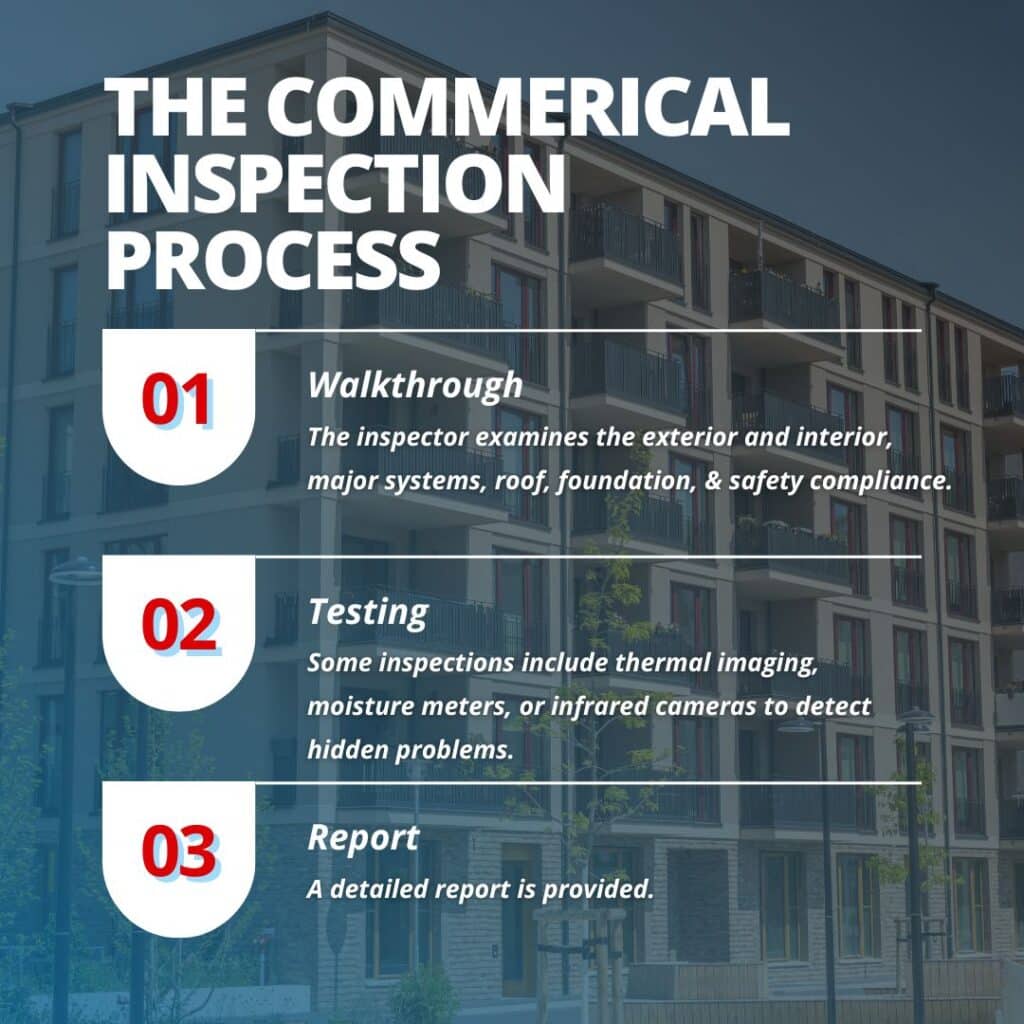
Even for current owners, up-to-date inspection reports help create a proactive maintenance plan and prevent unexpected repair costs.
Keeping a Commercial Property in Good Shape
Regular maintenance is key to avoiding expensive repairs and keeping a building safe and functional. Many commercial property owners follow a quarterly or annual maintenance schedule, with key areas requiring frequent attention:
- HVAC systems – Service twice a year (before summer and winter), replace filters every 1-3 months, and check refrigerant levels annually
- Plumbing and electrical – Inspect pipes and wiring annually to catch leaks, corrosion, or outdated components
- Roofing – Check for pooling water, damaged flashing, or membrane wear twice a year, especially after severe weather
- Fire safety systems – Test alarms, extinguishers, and sprinklers every six months to ensure they meet NFPA (National Fire Protection Association) standards
Setting up regular property inspections helps catch small problems early, saving thousands in potential repairs and ensuring compliance with local building codes.
When to Schedule Your Inspection
A commercial property inspection is valuable beyond just a real estate transaction. Situations where an inspection is strongly recommended include:
- Before purchasing or leasing – To uncover hidden defects before signing a contract
- Before selling – To identify and address issues that could delay a sale or lower the property’s value
- Before starting renovations – To confirm structural integrity and compliance with safety codes before making upgrades
- After severe weather events – To assess damage from hurricanes, heavy storms, or flooding
- As part of routine maintenance – To prevent small issues from escalating into major repairs
Skipping an inspection can lead to unexpected repair costs, safety risks, or even legal issues—needless to say, they’re a critical step for any commercial property.
Conclusion
A commercial property inspection is an essential step in protecting your investment, ensuring the building is structurally sound, safe, and compliant with regulations. Whether you’re buying, selling, or maintaining a property, a professional inspection helps you avoid costly surprises and plan for the future.
For a detailed commercial property evaluation, reach out to trusted inspection professionals who can provide accurate insights and expert guidance, helping you move forward with confidence.

